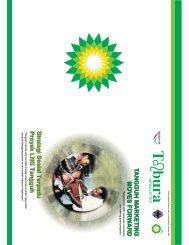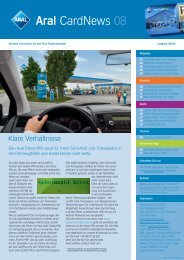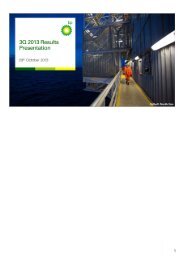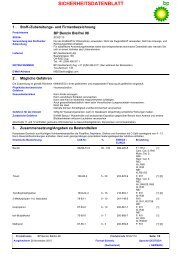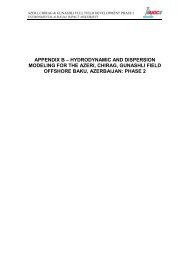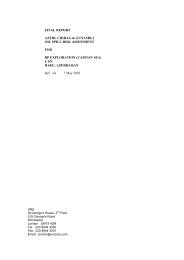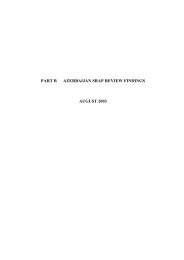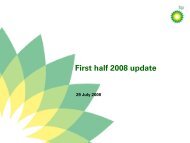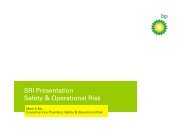Don Field Decommissioning Programme (pdf, 7.8MB) null - BP
Don Field Decommissioning Programme (pdf, 7.8MB) null - BP
Don Field Decommissioning Programme (pdf, 7.8MB) null - BP
Create successful ePaper yourself
Turn your PDF publications into a flip-book with our unique Google optimized e-Paper software.
<strong>Don</strong> <strong>Field</strong> <strong>Decommissioning</strong> <strong>Programme</strong>DON-<strong>BP</strong>-0016.3 Burial Status6.3.1 Design Burial Cross-sectionThe umbilicals were designed to be trenched to a depth of 0.3m from normal seabedlevel to the underside of the umbilical. Trenching was not performed, by design, at: The Thistle and <strong>Don</strong> manifold approaches Within 60m either side of the 20in NLGP crossingTransition from full trench depth to exposure is typically 10m at Thistle and the NLGPcrossing and 50m at the <strong>Don</strong> manifold approach.After trenching, the umbilicals were actively backfilled.Inspection of the 4in control umbilical was scheduled on an annual basis during theperiod 1991 to 1998 and on a biennial basis since 1998.Inspection of the 3in chemical injection umbilical was scheduled on an annual basisduring the period 1991 to 1995. After the chemical umbilical blocked and becameredundant in 1995, the inspection frequency was modified to reflect inspection forthreats to other users of the sea only. The technique used was sidescan sonar, visualROV, or a combination of the two. Sidescan was performed more frequently, with visualROV used to supplement sidescan inspection shortfalls at the extreme ends of thepipeline and to examine specific anomalies.6.3.2 Operational HistoryBurialThe historical burial trend is detailed in Table 10.6.The 4in control umbilical has experienced a consistent burial profile. Exposure levelshave remained extremely low and are generally associated with design features such asthe approaches to Thistle, the manifold and NLGP crossing, which were designed tobe untrenched.Post-installation, 17m of the line was exposed (0.1%). This slight exposure has remainedconstant during the lifetime of the umbilical. Rock dumping was performed in 1992 toprotect the umbilical at the manifold approach. It is clear that exposure is extremelylimited, with no trend of increase in exposure over the years. Due to the low seabedcurrents and stiff clay soil in this area, it is likely that these conditions would continuein future.The 3in chemical injection umbilical has experienced a consistent burial profilethroughout its life. Exposure levels have remained extremely low and are generallyassociated with design features such as the approaches to Thistle, manifold andcrossing, which were designed to be untrenched.Post-installation, 191m of the line was exposed (1%). This minor exposure has remainedconstant during the lifetime of the umbilical. Rock dumping was performed in 1992where the umbilical had been disturbed at the NLGP crossing. Inspection results from1991 to 2001 show that exposure fluctuates by a relatively small amount (between0.66% and 1.82% of the length surveyed).PipelinesMay 2011 10-31




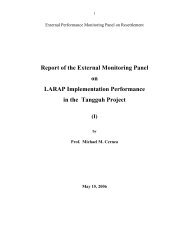
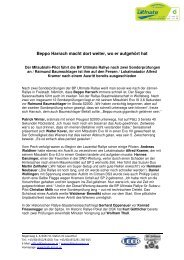
![[PDF] Deepwater Horizon: Accident Investigation Report - BP](https://img.yumpu.com/51697031/1/190x245/pdf-deepwater-horizon-accident-investigation-report-bp.jpg?quality=85)
